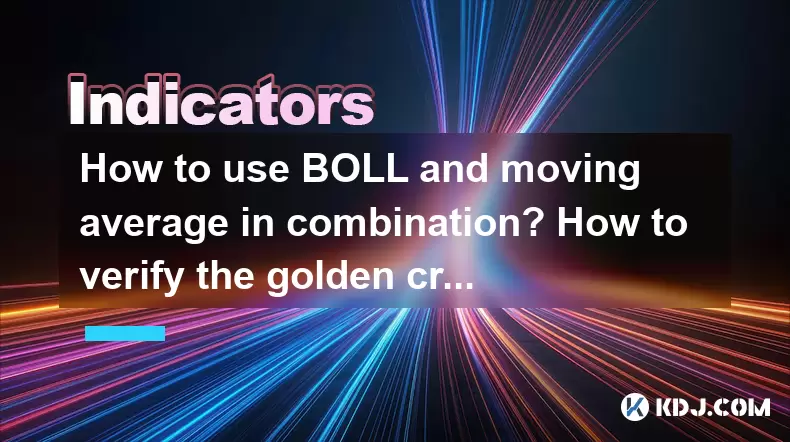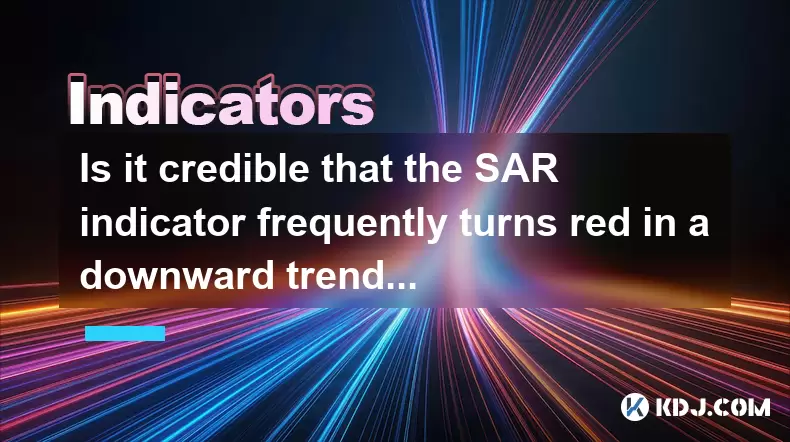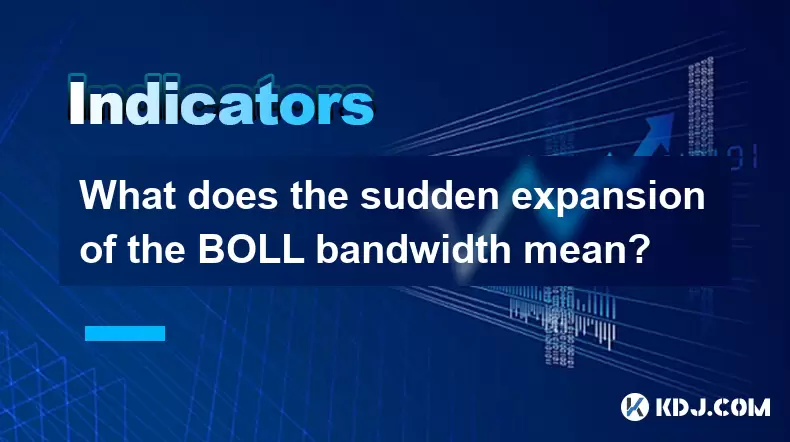-
 Bitcoin
Bitcoin $103,668.6810
-0.42% -
 Ethereum
Ethereum $2,427.2834
-2.40% -
 Tether USDt
Tether USDt $1.0003
0.02% -
 XRP
XRP $2.1193
-0.30% -
 BNB
BNB $636.2387
-1.32% -
 Solana
Solana $140.9214
-1.16% -
 USDC
USDC $0.9999
0.00% -
 TRON
TRON $0.2731
-0.04% -
 Dogecoin
Dogecoin $0.1609
-1.82% -
 Cardano
Cardano $0.5779
-0.26% -
 Hyperliquid
Hyperliquid $33.2383
-4.10% -
 Bitcoin Cash
Bitcoin Cash $473.9152
-2.33% -
 Sui
Sui $2.6499
-3.20% -
 Chainlink
Chainlink $12.5513
-1.73% -
 UNUS SED LEO
UNUS SED LEO $8.9251
0.39% -
 Stellar
Stellar $0.2424
-1.05% -
 Avalanche
Avalanche $17.1776
-2.32% -
 Toncoin
Toncoin $2.9186
-2.19% -
 Shiba Inu
Shiba Inu $0.0...01119
-2.30% -
 Litecoin
Litecoin $83.1100
-0.05% -
 Hedera
Hedera $0.1435
-1.31% -
 Monero
Monero $312.1229
0.28% -
 Ethena USDe
Ethena USDe $1.0006
0.00% -
 Polkadot
Polkadot $3.4148
-0.76% -
 Dai
Dai $1.0000
0.00% -
 Bitget Token
Bitget Token $4.2877
-0.24% -
 Uniswap
Uniswap $6.8295
-8.76% -
 Pepe
Pepe $0.0...09732
-1.53% -
 Pi
Pi $0.5345
-0.82% -
 Aave
Aave $245.5038
-3.02%
How to use BOLL and moving average in combination? How to verify the golden cross and dead cross signals?
Combine Bollinger Bands and moving averages to identify trends and trading opportunities in crypto markets, and verify golden and dead cross signals for reliable entry and exit points.
May 28, 2025 at 01:00 pm

In the world of cryptocurrency trading, technical analysis plays a crucial role in making informed decisions. Two popular tools used by traders are the Bollinger Bands (BOLL) and moving averages. When used in combination, these indicators can provide valuable insights into market trends and potential trading opportunities. Additionally, traders often rely on the golden cross and dead cross signals to determine entry and exit points. This article will explore how to effectively use BOLL and moving averages in combination and how to verify the golden cross and dead cross signals.
Understanding Bollinger Bands (BOLL)
Bollinger Bands are a volatility indicator created by John Bollinger. They consist of three lines: a middle band, which is typically a simple moving average (SMA), and an upper and lower band that are standard deviations away from the middle band. The standard setting for Bollinger Bands is a 20-day SMA with the upper and lower bands set at two standard deviations from the middle band.
Bollinger Bands help traders identify overbought and oversold conditions in the market. When the price touches or crosses the upper band, it may indicate that the asset is overbought, and a price correction could be imminent. Conversely, when the price touches or crosses the lower band, it may suggest that the asset is oversold, and a price rebound might be on the horizon.
Understanding Moving Averages
Moving averages are used to smooth out price data and identify trends over a specific period. There are two main types of moving averages: simple moving averages (SMA) and exponential moving averages (EMA). SMAs give equal weight to all data points within the specified period, while EMAs give more weight to recent data, making them more responsive to recent price changes.
Traders commonly use different periods for moving averages, such as the 50-day, 100-day, and 200-day moving averages. Shorter-term moving averages are more sensitive to price changes, while longer-term moving averages provide a broader view of the market trend.
Combining BOLL and Moving Averages
Combining Bollinger Bands and moving averages can provide a more comprehensive view of the market and help traders make better-informed decisions. Here's how to effectively use these indicators in combination:
Identify the Trend: Start by using a longer-term moving average, such as the 200-day SMA, to determine the overall market trend. If the price is above the 200-day SMA, it suggests a bullish trend, while a price below the 200-day SMA indicates a bearish trend.
Assess Volatility: Use Bollinger Bands to assess the current level of volatility in the market. When the bands are wide apart, it suggests high volatility, while narrow bands indicate low volatility.
Look for Breakouts: When the price breaks above the upper Bollinger Band during an uptrend (as indicated by the 200-day SMA), it may signal a continuation of the bullish trend. Conversely, a break below the lower Bollinger Band during a downtrend could indicate further bearish momentum.
Confirm with Shorter-Term Moving Averages: Use a shorter-term moving average, such as the 50-day SMA or EMA, to confirm the trend identified by the longer-term moving average. If the shorter-term moving average is above the longer-term moving average during an uptrend, it provides additional confirmation of the bullish trend.
Watch for Reversals: Be on the lookout for potential trend reversals. If the price starts to move away from the upper Bollinger Band and crosses below the 50-day SMA, it may signal a potential bearish reversal. Similarly, if the price moves away from the lower Bollinger Band and crosses above the 50-day SMA, it could indicate a potential bullish reversal.
Understanding Golden Cross and Dead Cross Signals
The golden cross and dead cross are popular technical indicators used to identify potential trend changes in the market.
Golden Cross: A golden cross occurs when a shorter-term moving average, typically the 50-day SMA, crosses above a longer-term moving average, usually the 200-day SMA. This signal is considered bullish and suggests that a long-term uptrend may be starting.
Dead Cross: A dead cross, also known as a death cross, happens when a shorter-term moving average, typically the 50-day SMA, crosses below a longer-term moving average, usually the 200-day SMA. This signal is considered bearish and indicates that a long-term downtrend may be beginning.
Verifying Golden Cross and Dead Cross Signals
While golden cross and dead cross signals can be powerful indicators, it's essential to verify these signals before making trading decisions. Here's how to verify these signals:
Confirm with Volume: Look for an increase in trading volume when the golden cross or dead cross occurs. Higher volume can confirm the validity of the signal and suggest that more traders are participating in the trend change.
Check for Support and Resistance Levels: Identify key support and resistance levels on the chart. If the golden cross occurs near a significant support level, it may provide additional confirmation of a potential uptrend. Similarly, if the dead cross happens near a crucial resistance level, it could reinforce the possibility of a downtrend.
Analyze the Overall Market Context: Consider the broader market context when verifying these signals. If the golden cross or dead cross aligns with other bullish or bearish indicators across different timeframes, it can increase the reliability of the signal.
Use Additional Indicators: Incorporate other technical indicators, such as the Relative Strength Index (RSI) or the Moving Average Convergence Divergence (MACD), to confirm the golden cross or dead cross signal. If these additional indicators align with the signal, it can provide further validation.
Practical Example of Using BOLL and Moving Averages
Let's walk through a practical example of how to use Bollinger Bands and moving averages in combination:
Step 1: Open your preferred cryptocurrency trading platform and select the asset you want to analyze.
Step 2: Add the following indicators to your chart:
- 200-day SMA
- 50-day SMA
- Bollinger Bands (20-day SMA, 2 standard deviations)
Step 3: Analyze the current market trend:
- If the price is above the 200-day SMA, it suggests a bullish trend.
- If the price is below the 200-day SMA, it indicates a bearish trend.
Step 4: Assess the current level of volatility using the Bollinger Bands:
- Wide bands suggest high volatility.
- Narrow bands indicate low volatility.
Step 5: Look for potential trading opportunities:
- If the price breaks above the upper Bollinger Band during an uptrend, it may signal a continuation of the bullish trend. Consider buying the asset.
- If the price breaks below the lower Bollinger Band during a downtrend, it could indicate further bearish momentum. Consider selling or shorting the asset.
Step 6: Use the 50-day SMA to confirm the trend:
- If the 50-day SMA is above the 200-day SMA during an uptrend, it provides additional confirmation of the bullish trend.
- If the 50-day SMA is below the 200-day SMA during a downtrend, it reinforces the bearish trend.
Step 7: Monitor for potential trend reversals:
- If the price moves away from the upper Bollinger Band and crosses below the 50-day SMA, it may signal a potential bearish reversal. Consider closing long positions or initiating short positions.
- If the price moves away from the lower Bollinger Band and crosses above the 50-day SMA, it could indicate a potential bullish reversal. Consider closing short positions or initiating long positions.
Practical Example of Verifying Golden Cross and Dead Cross Signals
Let's explore how to verify golden cross and dead cross signals using a practical example:
Step 1: Open your trading platform and select the cryptocurrency you want to analyze.
Step 2: Add the following indicators to your chart:
- 50-day SMA
- 200-day SMA
Step 3: Monitor for the occurrence of a golden cross or dead cross:
- A golden cross occurs when the 50-day SMA crosses above the 200-day SMA.
- A dead cross happens when the 50-day SMA crosses below the 200-day SMA.
Step 4: Verify the signal using the following steps:
- Confirm with Volume: Check the trading volume when the golden cross or dead cross occurs. Look for an increase in volume to confirm the validity of the signal.
- Check for Support and Resistance Levels: Identify key support and resistance levels on the chart. If the golden cross occurs near a significant support level or the dead cross happens near a crucial resistance level, it can provide additional confirmation.
- Analyze the Overall Market Context: Consider the broader market context. If other bullish or bearish indicators across different timeframes align with the golden cross or dead cross, it can increase the reliability of the signal.
- Use Additional Indicators: Incorporate other technical indicators, such as RSI or MACD, to confirm the golden cross or dead cross signal. If these additional indicators align with the signal, it can provide further validation.
Step 5: Make trading decisions based on the verified signals:
- If the golden cross is confirmed, consider initiating long positions or adding to existing long positions.
- If the dead cross is confirmed, consider closing long positions, initiating short positions, or adding to existing short positions.
Frequently Asked Questions
Q1: Can Bollinger Bands and moving averages be used effectively in highly volatile cryptocurrency markets?
A1: Yes, Bollinger Bands and moving averages can be particularly useful in volatile cryptocurrency markets. Bollinger Bands help traders assess the level of volatility, while moving averages provide insights into the underlying trend. By combining these indicators, traders can better navigate the choppy waters of crypto markets and identify potential trading opportunities.
Q2: How do I choose the right periods for my moving averages when trading cryptocurrencies?
A2: The choice of moving average periods depends on your trading style and time horizon. For short-term trading, consider using shorter periods like the 20-day or 50-day moving averages. For longer-term trading or investing, longer periods such as the 100-day or 200-day moving averages may be more appropriate. It's essential to backtest different periods and find what works best for your specific trading strategy.
Q3: Are golden cross and dead cross signals reliable in the cryptocurrency market?
A3: Golden cross and dead cross signals can be reliable in the cryptocurrency market, but they should not be used in isolation. It's crucial to verify these signals using additional indicators, volume analysis, and consideration of the overall market context. While these signals can provide valuable insights, they are not foolproof and should be used as part of a comprehensive trading strategy.
Q4: How often should I adjust my Bollinger Bands and moving average settings when trading cryptocurrencies?
A4: The frequency of adjusting your Bollinger Bands and moving average settings depends on your trading style and the specific cryptocurrency you're trading. For short-term traders, more frequent adjustments may be necessary to adapt to rapidly changing market conditions. Longer-term investors may adjust their settings less frequently. It's important to regularly review your settings and make adjustments based on the asset's volatility and trend characteristics.
Disclaimer:info@kdj.com
The information provided is not trading advice. kdj.com does not assume any responsibility for any investments made based on the information provided in this article. Cryptocurrencies are highly volatile and it is highly recommended that you invest with caution after thorough research!
If you believe that the content used on this website infringes your copyright, please contact us immediately (info@kdj.com) and we will delete it promptly.
- Bitcoin's Chain Split Drama: Knots, Core, and the BTC Price Rollercoaster
- 2025-06-21 22:25:12
- XRP Ledger Meme Coins: Volume Surges and Emerging Trends
- 2025-06-21 22:45:12
- Coin Price Surges: Smart Money's New Crypto Obsessions
- 2025-06-21 22:45:12
- Cardano, Neo Pepe, and Crypto Presales: What's Hot in the NYC Crypto Scene?
- 2025-06-21 22:25:12
- XRP, Meme Coins, and Wealthy Investors: A New Crypto Order?
- 2025-06-21 23:25:12
- Cardano (ADA) Price Check: Bearish Blues or Bounce Back Incoming?
- 2025-06-21 23:10:13
Related knowledge

Does the sudden contraction of ATR indicate the end of the trend?
Jun 20,2025 at 11:14pm
Understanding ATR and Its Role in Technical AnalysisThe Average True Range (ATR) is a technical indicator used to measure market volatility. Developed by J. Welles Wilder, ATR calculates the average range of price movement over a specified period, typically 14 periods. It does not indicate direction—only volatility. Traders use ATR to gauge how much an ...

Is it invalid if the DMI crosses but the ADX does not expand?
Jun 21,2025 at 09:35am
Understanding the DMI and ADX RelationshipIn technical analysis, the Directional Movement Index (DMI) consists of two lines: +DI (Positive Directional Indicator) and -DI (Negative Directional Indicator). These indicators are used to determine the direction of a trend. When +DI crosses above -DI, it is often interpreted as a bullish signal, while the opp...

How to filter false signals when the SAR indicator frequently flips?
Jun 21,2025 at 08:43pm
Understanding the SAR Indicator and Its BehaviorThe SAR (Stop and Reverse) indicator is a popular technical analysis tool used in cryptocurrency trading to identify potential reversals in price movement. It appears as a series of dots placed either above or below the price chart, signaling bullish or bearish trends. When the dots are below the price, it...

Is the trend continuation when the Williams indicator is oversold but there is no rebound?
Jun 20,2025 at 11:42pm
Understanding the Williams %R IndicatorThe Williams %R indicator, also known as the Williams Percent Range, is a momentum oscillator used in technical analysis to identify overbought and oversold levels in price movements. It typically ranges from 0 to -100, where values above -20 are considered overbought and values below -80 are considered oversold. T...

Is it credible that the SAR indicator frequently turns red in a downward trend?
Jun 22,2025 at 12:07am
What Is a Bitcoin Wallet and Why Do You Need One?A Bitcoin wallet is a digital tool that allows users to store, send, and receive Bitcoin. Unlike traditional wallets that hold physical currency, Bitcoin wallets do not actually store the cryptocurrency itself. Instead, they manage the private keys that grant access to your Bitcoin on the blockchain. Thes...

What does the sudden expansion of the BOLL bandwidth mean?
Jun 21,2025 at 01:49pm
Understanding the BOLL IndicatorThe BOLL (Bollinger Bands) indicator is a widely used technical analysis tool in cryptocurrency trading. It consists of three lines: a simple moving average (SMA) in the center, with upper and lower bands calculated based on standard deviations from that SMA. These bands dynamically adjust to price volatility. When trader...

Does the sudden contraction of ATR indicate the end of the trend?
Jun 20,2025 at 11:14pm
Understanding ATR and Its Role in Technical AnalysisThe Average True Range (ATR) is a technical indicator used to measure market volatility. Developed by J. Welles Wilder, ATR calculates the average range of price movement over a specified period, typically 14 periods. It does not indicate direction—only volatility. Traders use ATR to gauge how much an ...

Is it invalid if the DMI crosses but the ADX does not expand?
Jun 21,2025 at 09:35am
Understanding the DMI and ADX RelationshipIn technical analysis, the Directional Movement Index (DMI) consists of two lines: +DI (Positive Directional Indicator) and -DI (Negative Directional Indicator). These indicators are used to determine the direction of a trend. When +DI crosses above -DI, it is often interpreted as a bullish signal, while the opp...

How to filter false signals when the SAR indicator frequently flips?
Jun 21,2025 at 08:43pm
Understanding the SAR Indicator and Its BehaviorThe SAR (Stop and Reverse) indicator is a popular technical analysis tool used in cryptocurrency trading to identify potential reversals in price movement. It appears as a series of dots placed either above or below the price chart, signaling bullish or bearish trends. When the dots are below the price, it...

Is the trend continuation when the Williams indicator is oversold but there is no rebound?
Jun 20,2025 at 11:42pm
Understanding the Williams %R IndicatorThe Williams %R indicator, also known as the Williams Percent Range, is a momentum oscillator used in technical analysis to identify overbought and oversold levels in price movements. It typically ranges from 0 to -100, where values above -20 are considered overbought and values below -80 are considered oversold. T...

Is it credible that the SAR indicator frequently turns red in a downward trend?
Jun 22,2025 at 12:07am
What Is a Bitcoin Wallet and Why Do You Need One?A Bitcoin wallet is a digital tool that allows users to store, send, and receive Bitcoin. Unlike traditional wallets that hold physical currency, Bitcoin wallets do not actually store the cryptocurrency itself. Instead, they manage the private keys that grant access to your Bitcoin on the blockchain. Thes...

What does the sudden expansion of the BOLL bandwidth mean?
Jun 21,2025 at 01:49pm
Understanding the BOLL IndicatorThe BOLL (Bollinger Bands) indicator is a widely used technical analysis tool in cryptocurrency trading. It consists of three lines: a simple moving average (SMA) in the center, with upper and lower bands calculated based on standard deviations from that SMA. These bands dynamically adjust to price volatility. When trader...
See all articles

























































































